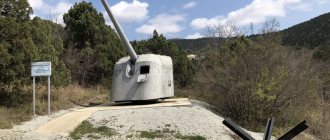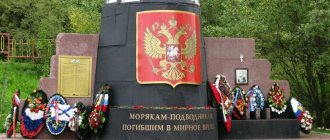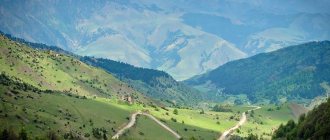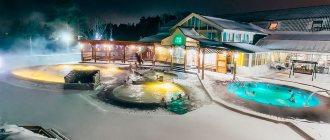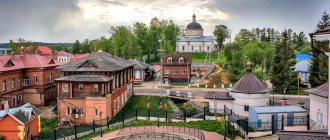Shakhty is a small town in the Rostov region, which, nevertheless, will be of interest to travelers.
The city is located on the banks of the Don River. In the place where the city was founded, coal has been mined for quite a long time, so from the very beginning of mining, a small farm was formed here, which grew into a beautiful city called Shakhty. The city has undergone several destructions throughout its history, both during the Civil War and during the Great Patriotic War.
But each time he recovered and became more and more beautiful. What can you see in Shakhty?
What makes the city of Shakhty special?
In order for all the museums, cultural monuments and unusual architectural structures to be understandable and give maximum emotions, it is worth studying a little about the history of the city. The name Shakhty, a former farmstead and now a city, was given for a reason. In ancient times, coal was mined at the site where the settlement arose.
You will be interested in:Hotels in Krasnogorsk: addresses, list of the best hotels, guest reviews
Initially, it was a small village, then local residents and authorities began to develop the infrastructure, and today the sights of Shakhty will excite and pleasantly surprise even the most selective traveler.
Enemies often encroached on the territory of the city, destroying its beauty and monuments. Nevertheless, local residents did not lose heart, again and again erecting structures and reconstructing important monuments. Today this city is open to everyone who wants to learn more about its history and secrets.
Great Lion of Tau-Ton – 5000 m
No country in the world can boast of such wealth that resides in the depths of this mine; it was even included in the Guinness Book of Records. But the main threat is its location in a seismic zone with increased danger. In addition, miners have to endure: considerable humidity, a temperature of 55 degrees, and the risk of blockages.
The work of the enterprise was launched in the 20th century, since then it has not stopped for a single day, almost 1,500 thousand tons of gold were extracted. Each employee is promised the possibility of buying out the housing provided by the company, but for this they have to work for at least 25 years.
Who should visit this city?
The sights of Shakhty will be of interest to everyone. This place is worth visiting for those who appreciate an active holiday filled with new knowledge and impressions. Shakhty is worth a visit:
- Families with children.
- For senior citizens of different countries.
- A curious tourist eager to get acquainted with the traditions and sights of the Mines.
- For excursion groups of different ages.
This town will give pleasant emotions to everyone who visits here. It will also reveal the secrets and historical values of the area.
Witwatersrand White Water Ridge – over 4500 m
The gold mine is located in the mountainous Transvaal region. It is still active, so the depth is not yet final. People work at 65 degrees. The owners of the enterprise claim that they have introduced a new cooling system that brings down the temperature to 27.
Like other gold mines in South Africa, this one is also considered unsafe.
Museums of the city of Shakhty
Museums are popular attractions in Shakhty. There are two most visited and largest museums in the city:
- Ethnographic Razdorsky reserve-museum.
- Local history museum of the city of Shakhty.
In the ethnographic museum you can study history to perfection. This reserve began its activities back in 1988. Over 30 years, the museum has accumulated many exhibits that will satisfy the curiosity of even the most inquisitive tourists.
In the local history museum you can learn about the history of the development of the city, its rulers, education and other interesting features of the origin and construction of the Mine.
It is worth visiting these museums to understand the history, traditions and secrets of the settlement.
Introducing a person to minerals
At the dawn of history, primitive man learned to use roughly processed stones as primitive tools and weapons.
Initially, our ancestors found stones of different types on the surface of the earth. Then, discovering the beneficial properties of natural stones, people began to purposefully search for a specific material.
At the same time, man first began to extract the necessary stones from other rocks - this is how people laid the foundation for underground mining and mining.
The ancient working resembled a deep well, the walls of which were equipped with stepping stones.
Today the mine is a large enterprise with technological equipment and automated control systems. A modern mine can be several tens of kilometers long.
| Ancient mine | Modern mine |
Metal Age
With the development of copper and bronze, humanity needed more advanced mining methods that would provide access to deep-lying ore layers. About 3,000 years ago, man learned to produce welded iron and mastered surface hardening, which increases the hardness of the metal.
The appearance of iron in everyday use gave impetus to the improvement of mining.
At first, ore was mined by open-pit mining, but then, to develop deep deposits, they began to equip mines, the depth of which reached 120 m. To descend and ascend, ladders were installed into the walls of the mine. Getting into the mine or getting to the surface required a lot of strength - so much so that workers sometimes had to stay underground for months.
Nowadays, workers are transported to the mine by special elevators.
| Ladders built into the walls of the trunk | Cage - a lifting mechanism in a modern mine |
Imploding works
As metallurgy developed over time, it required increasingly large volumes of coal, iron ore and other fossil materials. New tools began to appear in the workers’ arsenal, and the workings became deeper.
The use of explosives and the advent of dynamite simplified the work of miners and allowed the industry to reach a new level.
| Blasting in an ancient mine | Dynamite in the mine |
Mine flooding and problem solving
The deeper a person went underground, the more difficult it was for him - underground waters flooded the mines. Of course, it was not possible to cope with the flooding with a bucket and rope - the miners were forced to work in cold water. This kind of work was one of the hardest.
The first relatively effective way to remove water from a mine is to use a device called a noria. Norias are mechanisms for lifting liquids, which are bucket elevators. The chain of buckets was driven by a man running in a large drum resembling a squirrel wheel. Later, the mechanism began to be powered by animal power. Using the device it was possible to bail out water from a depth of up to 20 m.
Piston pumps made a small revolution in mining - thanks to them, miners gained access to deeper deposits of ore and coal.
| Noria - a mechanism for lifting water | Modern drainage system |
In the 17th century, the workings became even deeper, and growing mining volumes led to the introduction of wheelbarrows and trolleys into the extraction process. Before this, the sleds with the rock were pulled by “sleigh” workers.
In the 19th century, “sleigh riders” were replaced by horses. The workers who managed the animals were called horsemen. The horses in the mine recognized their owner by the sound of their voice. The animals took a long time to get used to the worker’s voice - because of this, horse drivers preferred to work with the same horse.
| Konogon in the mine | Modern mine vehicles |
Fireplace gas explosions
Throughout the history of the mining industry, firedamp has been one of the most significant problems in coal mines. Methane mixed with oxygen often exploded and posed a deadly danger to miners. In addition to gas, coal dust was also explosive.
The very first method of checking mines for gas contamination is going down into the mine with a canary placed in a cage. The death of the bird was an indicator of the presence of dangerous concentrations of mine and carbon monoxide in the mine atmosphere.
Today, workers monitor air purity using gas analyzers - stationary and individual. Modern miners' helmets are equipped with detectors that analyze the air and transmit information about its condition.
Lighting in mines
By the middle of the 18th century, “pinwheel flint” appeared in English workings - a source of bright sparks. Structurally, the device was a steel disk, which, when rotated rapidly, struck sparks from flint. This method of lighting has replaced open flames from torches or candles. For some reason, miners found sparks safer, although they also caused explosions.
In 1815, English physicist Humphry Davy invented his famous lamp. The Davy lamp is designed in such a way that a dangerous mixture of methane and air entering the lamp ignites inside the device body - the fire does not spread beyond the lamp.
The Davy lamp was the predecessor of gas analyzers - miners brought the lamp to the roof of the mine to determine the presence of an explosive mixture in the atmosphere by the size and shade of the flame.
| Davy safety lamp | Helmet with individual mine light |
Mining and Science
During early capitalism, mine owners did not take into account the harsh working conditions of miners. In many mines the temperature rose to 34 °C. In such conditions, a miner could work for approximately 20 minutes. It became obvious to mine owners that a person’s inability to work for a long time at such a temperature directly affects the income of the enterprise. This prompted them to start investing in ventilation systems.
In 1898, the Russian scientist B.I. Boykiy improved the technology of coal mining by introducing a ventilation system consisting of several fans in mines. The specialist’s innovations significantly improved the working conditions of miners.
Ventilation system in a modern mine
For many centuries, workers in the mines chopped coal with a pick and a butt, being in cramped faces. Most often they had to work lying down or sitting. But in the second half of the 19th century, along with an unprecedented rise in industry, technical equipment changed greatly. Miners began to use a drill, thanks to which they were able to excavate workings 200-300 m deep.
But the pick and butt were replaced by a drill and a jackhammer.
With the invention of the electric motor and the beginning of its industrial use, the electrification of mines began. Today, electric motors are part of the lifting mechanisms of cage elevators, pumps and fans. Using drills driven by electric motors, holes are made to place explosives. The explosives are detonated with an electric fuse. Electric light has become a completely safe alternative to previous methods of lighting. Electricity has transformed mining into high-tech enterprises.
A 21st century mine is a giant underground plant.
The drifts are laid by powerful roadheaders. Coal removal is completely mechanized - on trolleys the rock reaches skip lifts, which send the cargo upward to shipping bunkers. The face is illuminated by electric light, and cutting machines make cuts in massive rock layers. Pneumatic bumpers are crackling, conveyor belts with coal are moving. Cage elevators transport miners to the mine face. Above, above the mine, there are compressor stations, power plants, air supply systems, mining and processing plants, and railway infrastructure.
The work of a miner, which from time immemorial remained extremely difficult and risky, has today become largely automated. We apply all the achievements of mining science to make miners’ work comfortable and as safe as possible.
The most beautiful churches and temples in the city of Shakhty
The sights of the Mines of the Rostov region are varied and colorful. They also include numerous churches and temples, the architecture of which will delight every vacationer. The most popular among tourists are:
The Holy Intercession Church is an excellent place for Orthodox guests of Shakhty. The interior of the temple is dominated by paintings of incredible beauty. Such artistic creations are rarely found in conventional churches. Each icon carries a story. Ancient faces decorate and make the Holy Protection Church special for tourists and local residents. This landmark is located in the city of Shakhty in the Rostov region on Pobeda Revolyutsii Street, 22.
The Pokrovsky Cathedral was erected on the territory of a former tram depot. The grandeur and luxury of this building will impress every tourist and local resident. In addition to the beautiful architectural structure, the Pokrovsky Cathedral will delight vacationers with the beautiful landscapes created by the square and the large area adjacent to the building. The Orthodox Church is located on Sovetskaya Street, 74.
The Chapel of the Lord's Resurrection is located in the central park of the city of Shakhty. The chapel is filled with the spirit of history and events in the settlement. Every centimeter of the structure breathes antiquity, despite the fact that the chapel was reconstructed quite recently. You can get acquainted with the attraction at Shevchenko Street, 75.
Mir kimberlite pipe – 525 m
Not a very deep diamond mine in Russia, but the largest in the world. At the bottom there are two closed mining mines; they were built specifically for obtaining jewelry. Previously, this was impossible due to the explosion, which prevented open searches.
It looks like a giant funnel in shape, its size is associated with an unusual phenomenon; light gases emerge from the depths of the earth and disrupt the movement of helicopters. For this reason, flights over it are strictly prohibited.
Experts believe that the most beautiful and pure diamonds are mined here, which are much more expensive than in other places.
The most significant monuments of the city
The city of Shakhty reveals its horizons with various attractions, including monuments. There are many of them in the city, and each one is worthy of the attention of tourists and locals. The most famous monuments are:
The mass of attractions located in the city of Shakhty will satisfy the needs and curiosity of even the most selective tourists.
Source
Shakhterskaya – 1546 m
The deepest coal enterprise in Donbass and all of Ukraine is located in Shakhtersk. Construction was completed in 1986. The coal seams turned out to be suitable, did not pose any threat, and there were almost no hidden reserves of methane. The rock deposits, according to experts, will last at least another 50 years.
The mine was equipped with new imported equipment, so the statistics of emergency incidents gradually decreased. The processes have become mechanized, there are two complex faces and roadheaders. Coal mining is carried out at the mine in our time, but not very vigorously.
Popular message topics
- Algae in nature
The main habitat for algae is water bodies. Algae are unicellular, and some forms are multicellular organisms. Many of them are largely similar to each other according to certain criteria. Based on the fact that these plants are very - Kazakov's work
Yuri Pavlovich Kazakov (1927-1982) - Soviet writer, screenwriter and playwright. Kazakov grew up in an ordinary family in Moscow. He studied at a construction college, - Alternative energy sources
Alternative energy sources include quite a lot of terms and methods of obtaining and transmitting them. The main point of obtaining energy for a person will be how to cause less harm to the environment. Energy sources include:
Crime
In one of the famous talk shows in the early 2000s, there was an amazing story from a young guy about how, while on a date with a girl, he brushed off attacking hooligans with brass knuckles. When asked by the presenter why such an intelligent guy needs brass knuckles in his pocket, he replied: “But in our city it’s impossible otherwise, everyone walks like that. I live in the city of Shakhty, Rostov region.” A similar picture characterized the criminal picture of the city at the beginning of the century: unemployment and lack of money pushed the townspeople into robbery, robbery and theft. All metal was removed from unguarded dachas; even daredevils made their way into abandoned mines in the hope of removing steel equipment.
With the improvement of the economic situation, the overall crime rate of the city has decreased, although many citizens are of the opinion that after ten in the evening it is dangerous to appear alone on the streets of remote villages.
Of the high-profile crimes (much louder), one can highlight the execution of Sergei Ponomarenko, the ex-mayor of the city in April 2012. He was elected to the position of mayor of the city three times, but he had to leave his position due to the decree of the governor. By the time of the murder, 3 criminal cases had already been opened against the former mayor for abuse of power.
